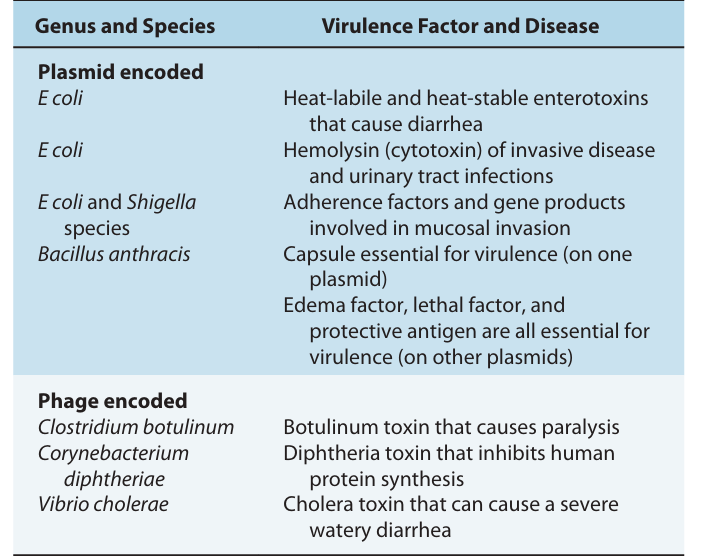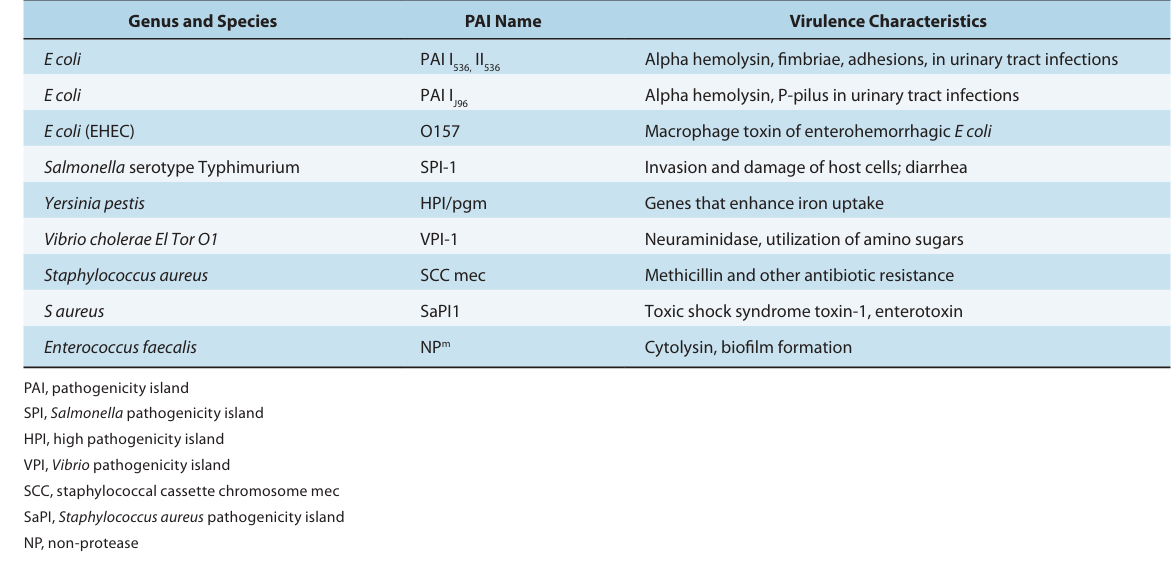
Genomics and Bacterial Pathogenicity
 المؤلف:
Carroll, K. C., Hobden, J. A., Miller, S., Morse, S. A., Mietzner, T. A., Detrick, B
المؤلف:
Carroll, K. C., Hobden, J. A., Miller, S., Morse, S. A., Mietzner, T. A., Detrick, B
 المصدر:
Jawetz, Melnick, & Adelberg’s Medical Microbiology
المصدر:
Jawetz, Melnick, & Adelberg’s Medical Microbiology
 الجزء والصفحة:
27E , P156-157
الجزء والصفحة:
27E , P156-157
 2025-02-24
2025-02-24
 1050
1050
Bacteria are haploid and limit genetic interactions that might change their chromosomes and potentially disrupt their adaptation and survival in specific environmental niches. One important result of the conservation of chromosomal genes in bacteria is that the organisms are clonal. For many pathogens, there are only one or a few clonal types that are spread in the world during a period of time. For example, epidemic serogroup A meningococcal meningitis occurs in Asia, the Middle East, and Africa and occasionally spreads into Northern Europe and the Americas. On several occasions, over a period of decades, single clonal types of serogroup A Neisseria meningitidis have been observed to appear in one geographic area and subsequently spread to others with resultant epidemic disease. There are two clonal types of Bordetella pertussis, both associated with disease. There are, however, mechanisms that bacteria use, or have used a long time in the past, to transmit virulence genes from one to another.
Mobile Genetic Elements
Primary mechanisms for exchange of genetic information between bacteria include natural transformation and transmissible mobile genetic elements such as plasmids, transposons, and bacteriophages (often referred to as “phages”). Transformation occurs when DNA from one organism is released into the environment and is taken up by a different organism that is capable of recognizing and binding DNA. In other cases, the genes that encode many bacterial virulence factors are carried on plasmids, transposons, or phages. Plasmids are extrachromosomal pieces of DNA and are capable of replicating. Transposons are highly mobile segments of DNA that can move from one part of the DNA to another. This can result in recombination between extrachromosomal DNA and the chromosome. If this recombination occurs, the genes coding for virulence factors may become chromosomal. Finally, bacterial viruses or phages are another mechanism by which DNA can be moved from one organism to another. Transfer of these mobile genetic elements between members of one species or, less commonly, between species can result in transfer of virulence factors, including antimicrobial resistance genes. A few examples of plasmid- and phage-encoded virulence factors are given in Table 1.

Table1. Examples of Virulence Factors Encoded by Genes on Mobile Genetic Elements
Pathogenicity Islands
Large groups of genes that are associated with pathogenicity and are located on the bacterial chromosome are termed pathogenicity islands (PAIs). They are large organized groups of genes, usually 10–200 kb in size. The major properties of PAIs are as follows: they have one or more virulence genes; they are present in the genome of pathogenic members of a species but absent in the nonpathogenic members; they are large; they typically have a different guanine plus cytosine (G + C) content than the rest of the bacterial genome; they are commonly associated with tRNA genes; they are often found with parts of the genome associated with mobile genetic elements; they often have genetic instability; and they often represent mosaic structures with components acquired at different times. Collectively, the properties of PAIs suggest that they originate from gene transfer from foreign species. A few examples of PAI virulence factors are provided in Table 2.

Table2. A Few Examples of the Very Large Number of Pathogenicity Islands of Human Pathogens
 الاكثر قراءة في البكتيريا
الاكثر قراءة في البكتيريا
 اخر الاخبار
اخر الاخبار
اخبار العتبة العباسية المقدسة


